The origin of drones
It all started in Madison Square Garden where Nicola Tesla staged a scientific tour de force during the Electrical Exhibition of 1898. The demonstration was completely beyond the generally accepted limits of technology at this time. His invention took the form of a radio-controlled boat, a heavy, low-lying, steel craft about 120 cm long. Tesla’s boat carried several large batteries on board. Radio signals controlled switches, which energized the boat’s propeller and rudder. More Info
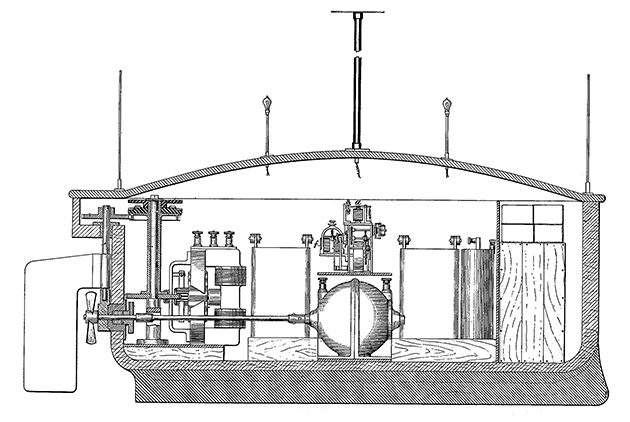
Source: https://www.engadget.com/2014/01/19/nikola-teslas-remote-control-boat/
Tesla showcased his ability to maneuver the tiny ship with a small radio transmitting control box and even flash its lights on and off.
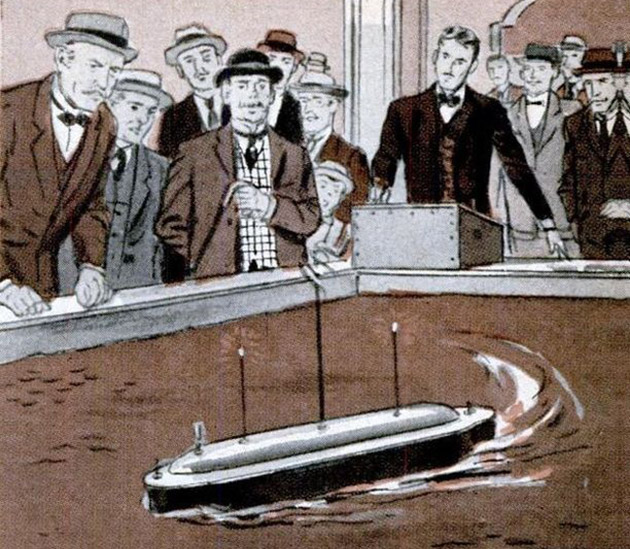
The drone revolution: from war to commercial applications.
Newspaper headlines focused on the use of Tesla’s device as a wirelessly controlled torpedo, and as you can imagine the military has been a catalyst over the years for the development of UAV technology. From the beginning of the 20th century to present days, drones are being used for delivering of bombs and surveillance.
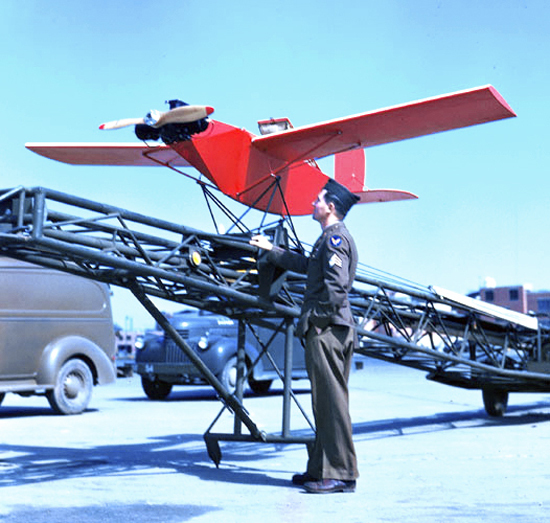
1940: Actor and hobbyist Reginald Denny sells 15,000 radio-controlled target drones to the U.S. military to train anti-aircraft gunners for World War II. Source: http://fortune.com/2014/10/09/a-brief-history-of-drones/
Photographer David Conover snaps images of Norma Jeane Dougherty—soon to be known as Marilyn Monroe—working at a wartime assembly plant. On her workbench: a half-assembled drone.
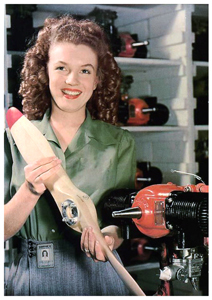
Despite the obvious military applications of his invention of the “remote control”, back in 1898 Tesla made a case about the commercial use of unmanned vehicles. According to Margaret Cheney’s “Tesla: A Man Out of Time”, when asked about the boat’s potential as an explosive-delivery system, Tesla responded:
“You do not see there a wireless torpedo; you see there the first of a race of robots, mechanical men which will do the laborious work of the human race.”
Today, like the internet and GPS before them, drones are evolving beyond their military applications to become powerful business tools. UAVs already made the transition to the consumer market as the technology is cheaper, lighter, safer and more sophisticated. Flight, speed, dramatic photography – it’s easy to see why drones appeal to consumers. Professional UAV applications are also developing rapidly and drones are currently being used in a variety of industries, including agriculture, energy, utilities, mining, construction, real estate, news media, and film production. Venture capitalists have invested nearly a billion dollars into new companies that manufacture drones spread all over the world.
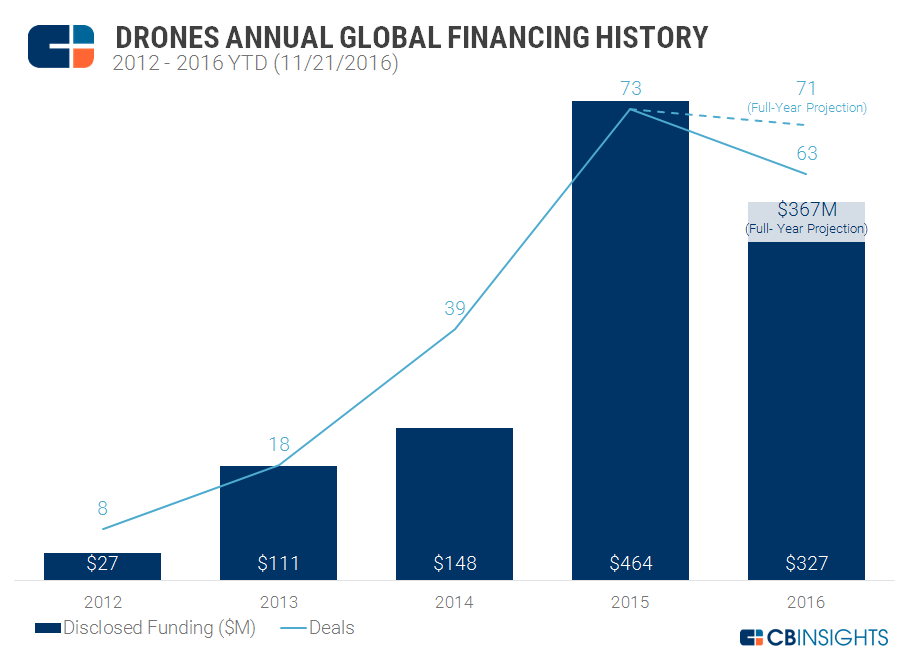
The drone trade association, Association for Unmanned Vehicle Systems International ( AUVSI ), forecasts over $80 billion will be added to the United States economy alone from drone commerce in the coming decade. The research concludes that precision agriculture is the most promising civil commercial sector.
A new Goldman Sachs analysis forecasts a $100 billion market opportunity for drones—helped by growing demand from the commercial and civil government sectors. PricewaterhouseCoopers (doing business as PwC), the second largest professional services firm in the world and one of the Big Four auditors, along with Deloitte, EY and KPMG, estimated that the total global addressable value of drone powered solutions in 2015 was equal to $ 127.3 billion, agriculture being the second largest sector with a total addressable market of $ 32.4 billion.
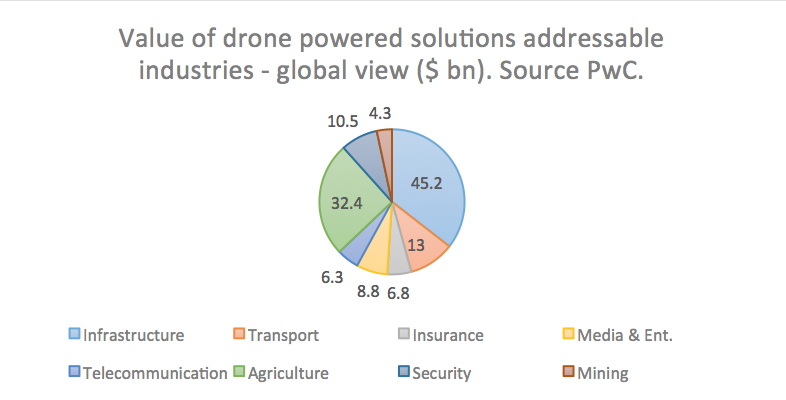
Drones are going to have huge impact on the way we do business. Do you want to be part of Nicola Tesla’s vision?
Do you want to participate in the drone revolution ?

